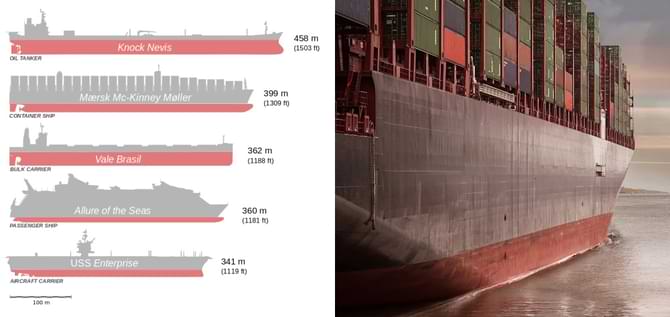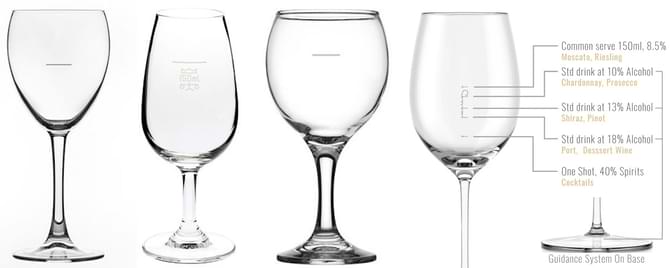
28 August, 2023
Understanding the Importance of Plimsoll Lines on Glassware
In the world of glassware, the subtle but crucial feature of plimsoll lines plays a significant role in ensuring a safe and enjoyable drinking experience. These lines serve as a reference point, indicating the safe operating level of liquid inside the glass. They also ensure an exact amount of beverage is poured in a glass, so establishments know what profit they are making from a beverage. Drawing inspiration from maritime engineering, where Plimsoll lines safeguard ships from overloading, this concept has been adapted for use in various glassware, including wine glasses, pint glasses, and other drinkware in the food and beverage industry. In this article, we will delve deeper into the origins and purpose of plimsoll lines, their importance in different settings, and how they contribute to promoting proper serving and drinking practices.
The Maritime Inspiration

The mid-19th century was a transformative period for the shipping industry, with advancements in technology and an increase in global trade. However, this era also witnessed the rise of unethical practices among some ship owners who prioritised profits over the safety of their vessels and crew. During this time, Samuel Plimsoll, a British merchant and politician, became a prominent figure in advocating for the safety of maritime operations by introducing a crucial marking system known as the Plimsoll line.
Samuel Plimsoll was born in Bristol, England, in 1824 and started his career as a coal merchant. Witnessing the harsh conditions that sailors and labourers faced during loading and unloading cargo, he developed a deep concern for the well-being of seafarers. Plimsoll's empathy and desire for change led him to enter politics, and in 1868, he was elected as a Member of Parliament (MP) for Derby.
During the 19th century, the shipping industry was rife with unscrupulous ship owners who sought to maximise their profits by overloading vessels. They would load ships beyond their safe capacity, making them unstable and endangering the lives of mariners and the cargo they carried. Shipwrecks due to overloading were distressingly common, leading to significant losses of both human lives and valuable goods.
Disturbed by the tragic consequences of overloading and the lack of regulations to protect sailors, Samuel Plimsoll dedicated himself to advocating for change. Drawing attention to the deplorable conditions, he embarked on a relentless campaign to establish safety measures that would prevent shipowners from endangering their crews for financial gain.
Plimsoll's efforts culminated in the introduction of a load line marking system that would become known as the Plimsoll line. This marking system consisted of horizontal lines and letters painted on the hulls of ships. The lines indicated the maximum safe draft at which the vessel could be loaded, considering the specific conditions of the sea, such as salinity and temperature. The letters represented the authority or organisation responsible for approving the ship's loading conditions.
In 1876, the British Parliament passed the Merchant Shipping Act, which formally incorporated Plimsoll's proposed marking system into law. This act mandated the use of the Plimsoll line on all British registered ships. The Plimsoll line brought a measure of accountability and safety to the shipping industry, protecting mariners and cargo alike.
The success of the Plimsoll line in safeguarding British ships and crew inspired other maritime nations to adopt similar systems. As a result, the Plimsoll line became an international symbol of ship safety. Today, nearly all seafaring nations have implemented variations of the Plimsoll line concept, ensuring that vessels worldwide adhere to safe loading practices.
Adapting the Concept to Glassware

In the context of glassware, adapting the concept of the Plimsoll line has proven to be a brilliant and practical idea that significantly enhances the drinking experience for consumers while ensuring safety and convenience. Just as the Plimsoll line on ships prevents overloading and ensures a safe waterline, the application of this concept to glassware prevents overfilling and guarantees a seamless drinking experience.
The primary purpose of the Plimsoll line in glassware is to provide a clear visual guide for both bartenders and consumers, indicating the optimal level to which a glass should be filled. It also guarantees an exact amount is poured into the glass. How many times have you ordered a "glass" of wine from a restaurant only to be disappointed by the amount poured? With Plimsoll lines, the restaurant can state they are offering an exact amount of beverage - EG: 200ml - as that is where the Plimsoll line is done. This line is strategically placed on the glass, taking into account the specific shape and design of the vessel, and it is often marked with a distinctive colour or pattern to make it easily distinguishable. In this way, the consumer is confident of the amount poured and the establishment knows the exact amount of costings as the same quantity of beverage is poured every time.
By following the Plimsoll line, bartenders can consistently pour the right amount of liquid into the glass, whether it's a pint of beer, a glass of wine, or a cocktail. This ensures that customers receive the correct portion of their chosen drink, creating a sense of trust and satisfaction in the establishment's service. It also helps bartenders to avoid overpouring, reduce waste and control costs for the business.
For consumers, the Plimsoll line serves as a valuable visual cue, enabling them to gauge the appropriate level to which they can enjoy their beverage without the fear of spillage or breakage. This becomes particularly important for drinks that require some additional room for garnishes or froth. With the Plimsoll line as a guide, customers can comfortably hold and sip from their glasses without the risk of liquids sloshing over the edges.
Furthermore, the Plimsoll line in glassware encourages responsible drinking. By promoting accurate measurements, establishments can control the amount of alcohol served per drink, contributing to safer drinking practices and potentially reducing instances of overconsumption. This benefits the consumers by ensuring they can enjoy their beverages responsibly and helps foster a positive reputation for the establishment as one that prioritises customer well-being.
The adaptability of the Plimsoll line concept to glassware extends beyond traditional drinking glasses. It can also be employed in specialised glassware designed for specific beverages, such as wine glasses with Plimsoll lines indicating the ideal pour level for red and white wines. In this way, it caters to the nuances of different drinks, enhancing the overall drinking experience and appreciation of the beverages' unique characteristics.
Conclusion
In conclusion, plimsoll lines on glassware represent a clever adaptation of maritime engineering principles to enhance the drinking experience safely and enjoyably. By providing a visual guide for filling beverages at the correct level, plimsoll lines ensure that glasses are optimally filled without risk of spills or overflows. Whether in commercial establishments or for individual consumers, plimsoll lines contribute to consistency, standardisation, and improved enjoyment of beverages. So, the next time you raise a glass for a toast or a refreshing sip, take a moment to appreciate their subtle but valuable guidance, ensuring your drink is served and enjoyed at its best.
The Glassware Only Team



